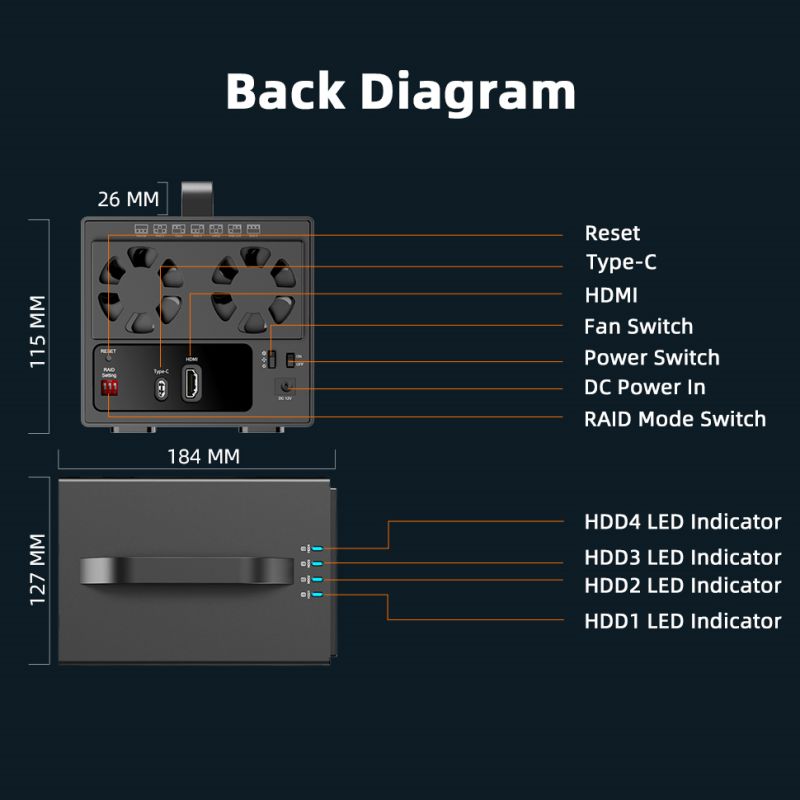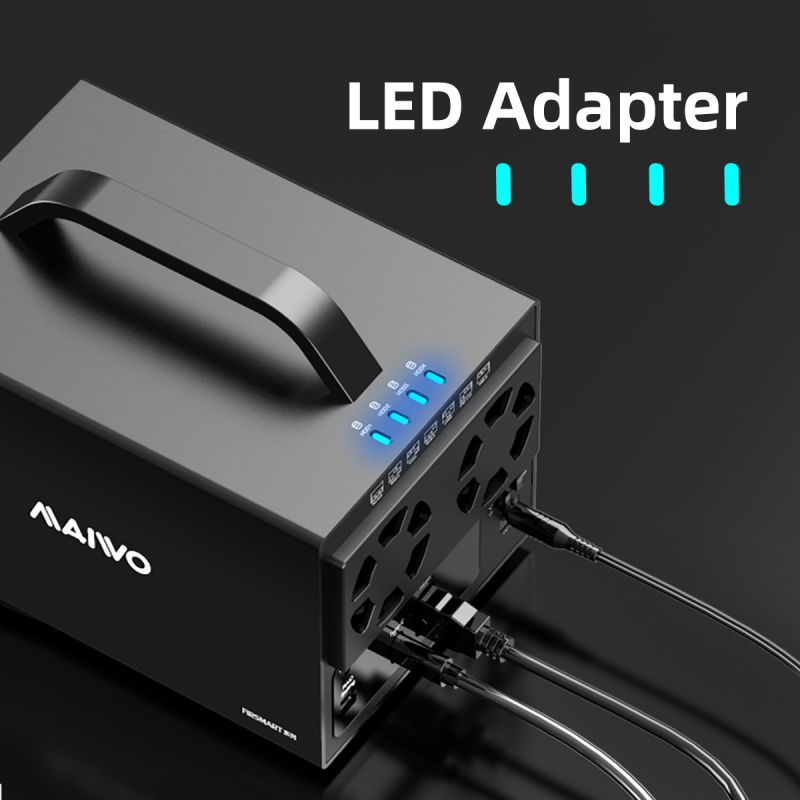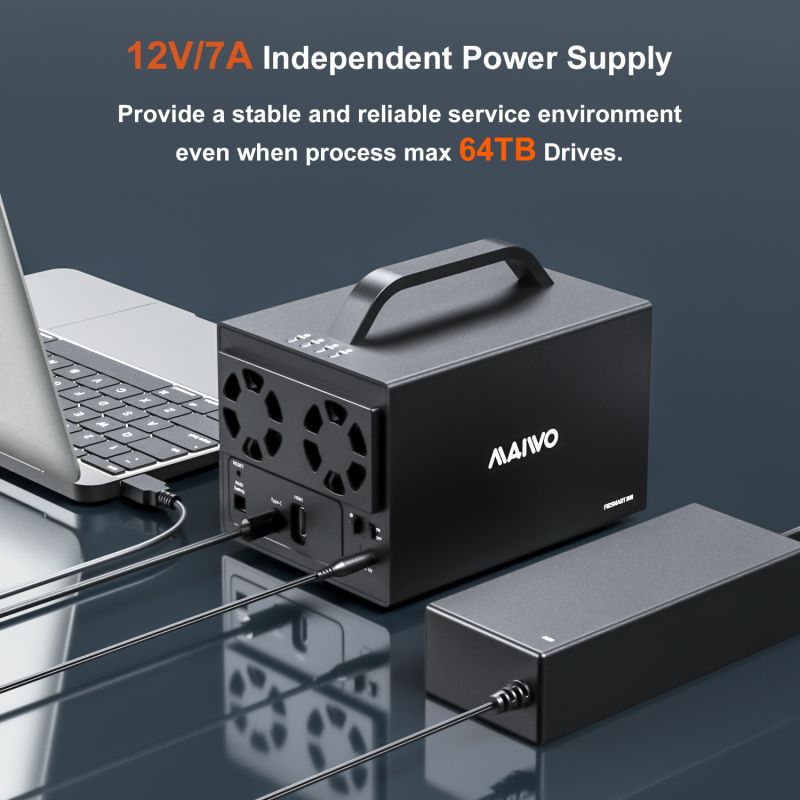A 4-bay RAID enclosure, also known as a 4-bay HDD enclosure or 4-bay 3.5'' HDD enclosure, is a storage device designed to accommodate multiple hard disk drives (HDDs) in a single unit. These enclosures are commonly used in various applications where data storage, redundancy, and performance are essential. In this article, we will delve into the functionality and benefits of a 4-bay RAID enclosure, exploring its features, configurations, and applications.
1. Functionality of a 4-Bay RAID Enclosure:
A 4-bay RAID enclosure serves as a centralized storage solution for organizing and managing multiple hard drives within a single enclosure. The enclosure typically features four drive bays, each capable of accommodating a standard 3.5-inch HDD. These drive bays are equipped with trays or slots for easy insertion and removal of the hard drives.
One of the key functionalities of a 4-bay RAID enclosure is its support for RAID (Redundant Array of Independent Disks) configurations. RAID technology allows multiple hard drives to be combined and managed as a single logical unit, offering various benefits such as data redundancy, improved performance, and increased storage capacity.


2. Benefits of a 4-Bay RAID Enclosure:
Increased Storage Capacity: By utilizing multiple hard drives within a single enclosure, a 4-bay RAID enclosure offers significantly increased storage capacity compared to individual drives. This allows users to store large amounts of data, including multimedia files, documents, and backups, in a centralized location.
Data Redundancy and Protection: One of the primary advantages of RAID configurations is data redundancy, which ensures that data remains accessible even if one or more hard drives fail. A 4-bay RAID enclosure supports various RAID levels, such as RAID 1 (mirroring) and RAID 5 (striping with parity), providing different levels of data protection and fault tolerance.
Improved Performance: RAID configurations can also enhance storage performance by distributing data across multiple drives and leveraging parallel data access. This results in faster read and write speeds, making it ideal for applications that require high-speed data transfer, such as video editing or database management.
Flexibility and Scalability: A 4-bay RAID enclosure offers flexibility and scalability, allowing users to customize RAID configurations according to their specific requirements. Users can choose the RAID level that best suits their needs, and easily expand storage capacity by adding additional hard drives to the empty drive bays.
Centralized Data Management: With a 4-bay RAID enclosure, users can centralize their data storage and management, simplifying access and organization of files across multiple devices. This promotes efficiency and collaboration in environments where data sharing and accessibility are crucial.

3. Applications of a 4-Bay RAID Enclosure:
Home NAS (Network Attached Storage) Systems
Small to Medium-sized Businesses (SMBs)
Media Servers for Streaming and Multimedia Content
Backup and Disaster Recovery Solutions
Professional Creative Workstations
Surveillance Systems and Video Storage
In conclusion, a 4-bay RAID enclosure offers a versatile and efficient storage solution for organizing, protecting, and accessing large volumes of data. With support for RAID configurations, increased storage capacity, data redundancy, improved performance, and centralized management, a 4-bay RAID enclosure is well-suited for a wide range of applications in both home and professional environments. Whether used for personal file storage or business-critical data management, a 4-bay RAID enclosure provides reliability, flexibility, and scalability to meet diverse storage needs.